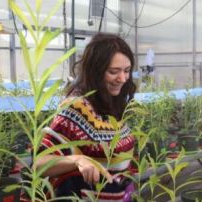Fundamental and Applied Research for the Effective Deployment of Phytoremediation
A special issue of Plants (ISSN 2223-7747). This special issue belongs to the section "Plant Response to Abiotic Stress and Climate Change".
Deadline for manuscript submissions: closed (1 September 2020) | Viewed by 110441
Special Issue Editors
Interests: phytoremediation; pollutants; contaminants; plant- microbe-soil-pollutant interactions; omics; wastewater; ecophysiology; interdisciplinary research; applied science
Interests: phytoremediation; pollutants; contaminants; plant- microbe-soil-pollutant interactions; omics; wastewater; ecophysiology; interdisciplinary research; applied science
Special Issues, Collections and Topics in MDPI journals
Special Issue Information
Dear Colleagues,
The use of phytoremediation (i.e., the treatment of polluted air, soil, sediments, and water with plants and associated microbes) to reduce the impact of human activity on the environment has expanded over the past few years.
Both public and private interest in environmental remediation strongly foster research discoveries. Indeed, the scientific community has made outstanding achievements in the field which are about to overcome the major bottleneck of transitioning from the lab to a widespread and effective deployment of these innovative green technologies. In the forthcoming Special Issue of Plants on phytoremediation, we welcome scientific works (original research papers, field trials and case studies, methods, modeling approaches, and reviews) from a broad scope of disciplines ranging from -omics studies and basic molecular biology to ecophysiology and large-scale applications. Interdisciplinary works are highly welcomed. We aim to highlight original research approaches and to contribute to the successful expansion of phytoremediation applications.
Thank you for your contributions.
Dr. Frédéric Pitre
Dr. Joan Laur
Guest Editors
Manuscript Submission Information
Manuscripts should be submitted online at www.mdpi.com by registering and logging in to this website. Once you are registered, click here to go to the submission form. Manuscripts can be submitted until the deadline. All submissions that pass pre-check are peer-reviewed. Accepted papers will be published continuously in the journal (as soon as accepted) and will be listed together on the special issue website. Research articles, review articles as well as short communications are invited. For planned papers, a title and short abstract (about 250 words) can be sent to the Editorial Office for assessment.
Submitted manuscripts should not have been published previously, nor be under consideration for publication elsewhere (except conference proceedings papers). All manuscripts are thoroughly refereed through a single-blind peer-review process. A guide for authors and other relevant information for submission of manuscripts is available on the Instructions for Authors page. Plants is an international peer-reviewed open access semimonthly journal published by MDPI.
Please visit the Instructions for Authors page before submitting a manuscript. The Article Processing Charge (APC) for publication in this open access journal is 2700 CHF (Swiss Francs). Submitted papers should be well formatted and use good English. Authors may use MDPI's English editing service prior to publication or during author revisions.
Keywords
- phytoremediation
- pollutants
- contaminants
- plant–microbe–soil–pollutant interactions
- -omics
- wastewater
- ecophysiology
- interdisciplinary research
- applied science
Benefits of Publishing in a Special Issue
- Ease of navigation: Grouping papers by topic helps scholars navigate broad scope journals more efficiently.
- Greater discoverability: Special Issues support the reach and impact of scientific research. Articles in Special Issues are more discoverable and cited more frequently.
- Expansion of research network: Special Issues facilitate connections among authors, fostering scientific collaborations.
- External promotion: Articles in Special Issues are often promoted through the journal's social media, increasing their visibility.
- Reprint: MDPI Books provides the opportunity to republish successful Special Issues in book format, both online and in print.
Further information on MDPI's Special Issue policies can be found here.







